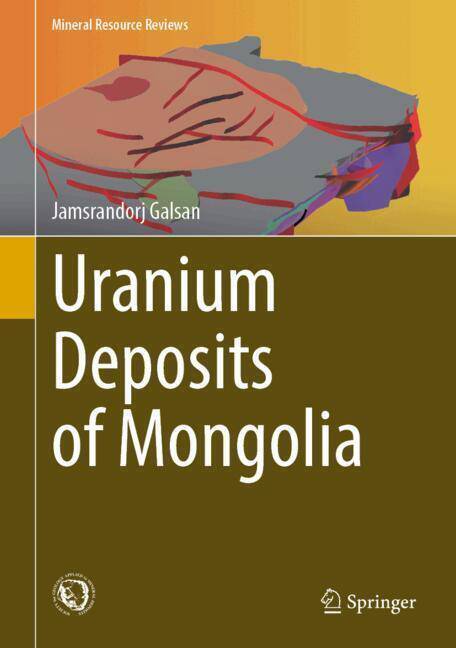
- Afhalen na 1 uur in een winkel met voorraad
- Gratis thuislevering in België vanaf € 30
- Ruim aanbod met 7 miljoen producten
- Afhalen na 1 uur in een winkel met voorraad
- Gratis thuislevering in België vanaf € 30
- Ruim aanbod met 7 miljoen producten
Omschrijving
This book contained the geological investigation condition of the territory of Mongolia for uranium, the geodynamic position of the uranium mineralization. To delineate metallogenic zoning for uranium in the territory of Mongolia, we determined geodynamic settings based on the development of geological complexes and formations with which uranium mineralization is related both genetically and spatially. It should be noted that a larger number of NRE radio-geochemical anomalies are associated with various types of rocks of different ages and genesis. However, a careful study of the distribution and composition of these rocks showed that uranium mineralization is associated with igneous rocks of active continental margins and their back-arc (back-arc) structures of rift origin. In addition, mostly in Eastern and Northern Mongolia, uranium mineralization is also associated with alkaline bimodal volcanic of the rift origin. This pattern has been noted previously by various researchers. The main regularities in the distribution of uranium objects based on the geodynamic position of tectonics are revealed, uranium-bearing provinces, zones and districts are characterized, uranium-ore epochs are identified, the main genetic types of genetic uranium deposits according to the IAEA classification of uranium deposits, the state of uranium reserves and resources in Mongolia is given. The characteristics of the geological structure of all uranium deposits in Mongolia are given.
According to the classification of uranium deposits (Franz J. Dahlkamp, 2015) by the IAEA, the following types of uranium deposits can be distinguished on the territory of Mongolia: sandstone deposits; deposits related with volcanic rocks; deposits related with granites; deposits related with intrusions; deposits related with metasomatites; deposits related with lignites and coals; deposits related with phosphorites; deposits related with black shales; near-surface deposits, of which the first 2 types are the most studied. The rest are distinguished only by direct prospecting signs and need detailed study in the future and have good prospects for increasing Mongolia's uranium reserves. The main share (66.69%) of Mongolia's reserves falls on the deposits of the East Mongolian and Gobi uranium zones, where sandstone deposits are common. Deposits related with volcanic rocks in the Eastern zone occupy about 25.19% of Mongolia's uranium reserves. The book is intended not only for geologists, specialists and scientists in the field of uranium geology, but for investors in geological exploration and exploitation in Mongolia for uranium.
Specificaties
Betrokkenen
- Auteur(s):
- Uitgeverij:
Inhoud
- Aantal bladzijden:
- 276
- Taal:
- Engels
- Reeks:
Eigenschappen
- Productcode (EAN):
- 9783031864803
- Uitvoering:
- Hardcover
- Afmetingen:
- 178 mm x 254 mm

Alleen bij Standaard Boekhandel
Beoordelingen
We publiceren alleen reviews die voldoen aan de voorwaarden voor reviews. Bekijk onze voorwaarden voor reviews.











